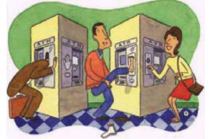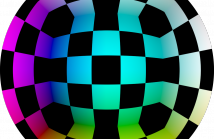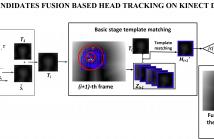- Read more about Masked Correlation Filters for Partially Occluded Face Recognition
- Log in to post comments
- Categories:
 19 Views
19 Views
- Read more about Discriminant Correlation Analysis for Feature Level Fusion with Application to Multimodal Biometrics
- Log in to post comments
In this paper, we present Discriminant Correlation Analysis (DCA), a feature level fusion technique that incorporates the class associations in correlation analysis of the feature sets. DCA performs an effective feature fusion by maximizing the pair-wise correlations across the two feature sets, and at the same time, eliminating the between-class correlations and restricting the correlations to be within classes.
- Categories:
 120 Views
120 Views- Read more about Face Alignment by Deep Convolutional Network with Adaptive Learning Rate
- Log in to post comments
Deep convolutional network has been widely used in face recognition while not often used in face alignment. One of the most important reasons of this is the lack of training images annotated with landmarks due to fussy and time-consuming annotation work. To overcome this problem, we propose a novel data augmentation strategy. And we design an innovative training algorithm with adaptive learning rate for two iterative procedures, which helps the network to search an optimal solution.
- Categories:
 7 Views
7 Views- Read more about CHUTE BASED AUTOMATED FISH LENGTH MEASUREMENT AND WATER DROP DETECTION
- Log in to post comments
Image processing and analysis techniques have drawn increasing attention since they enable a non-extractive and non-lethal approach to fisheries survey, such as fish size measurement, abundance prediction, catch estimation and compliance, species recognition and population counting. In this work, we present an innovative and effective method for measuring the chute-based fish length based on the morphological midline of the fish. The midline is generated through recursive morphological operations on the segmented fish mask.
- Categories:
 47 Views
47 ViewsICASSP 2016 presentation, Session: IVMP-P8 - Interpolation and Super-Resolution, Tursday, March 24, 13:30-15:30
- Categories:
 13 Views
13 Views
- Read more about A Data Set Providing Synthetic and Real-World Fisheye Video Sequences
- Log in to post comments
In video surveillance as well as automotive applications, so-called fisheye cameras are often employed to capture a very wide angle of view. To be able to develop and evaluate algorithms specifically adapted to fisheye images and videos, a corresponding test data set is therefore introduced in this paper. The sequences are freely available via www.lms.lnt.de/fisheyedataset/.
- Categories:
 57 Views
57 Views- Read more about Presentation Slides for 'Multiple-kernel Adaptive Segmentation and Tracking (MAST) for Robust Object Tracking'
- Log in to post comments
In a video surveillance system with static cameras, object segmentation often fails when part of the object has similar color with the background, resulting in poor performance of the subsequent object tracking. Multiple kernels have been utilized in object tracking to deal with occlusion, but the performance still highly depends on segmentation.
- Categories:
 20 Views
20 Views
- Read more about REAL-TIME MULTI-CANDIDATES FUSION BASED HEAD TRACKING ON KINECT DEPTH SEQUENCE
- Log in to post comments
- Categories:
 4 Views
4 Views